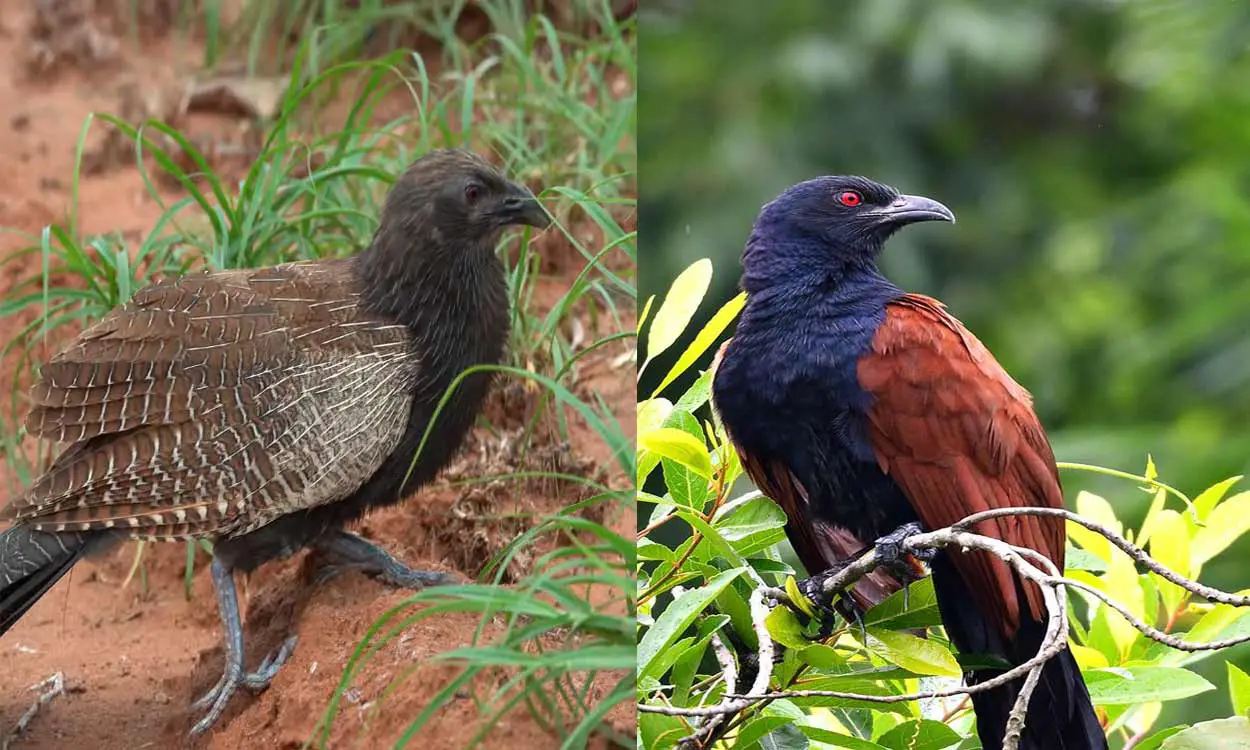Is a Coucal a Pheasant?
Birds are among the most diverse and fascinating groups of animals on Earth. They come in all shapes, sizes, colors, and behaviors. Birds can be found in almost every habitat and region of the world.
However, not all birds are equally related to each other, and some of them may look more similar than they actually are.
One example of this is the coucal and the pheasant, two types of birds that share some common features, but belong to different families. Is a coucal a pheasant? The answer is NO, and this article will explain why.
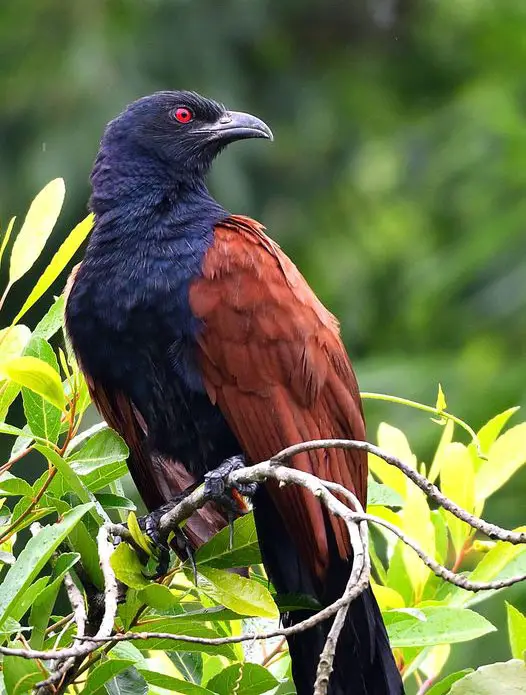
What is a Coucal?
A coucal is a type of cuckoo, which belongs to the family Cuculidae. Cuckoos are medium to large-sized birds that have long tails, curved bills, and zygodactyl feet (two toes pointing forward and two backward).
Cuckoos are mostly found in Africa, Asia, and Australasia. They are known for their diverse vocalizations and their parasitic breeding behavior. Some cuckoos lay their eggs in the nests of other birds, and let them raise their young.
Coucals are a subfamily of cuckoos that have terrestrial habits and do not practice brood parasitism. They build their own nests and care for their own offspring.
Coucals have dark plumage, often with metallic or iridescent highlights, and some of them have crests or wattles on their heads. There are about 30 species of coucals in the world.
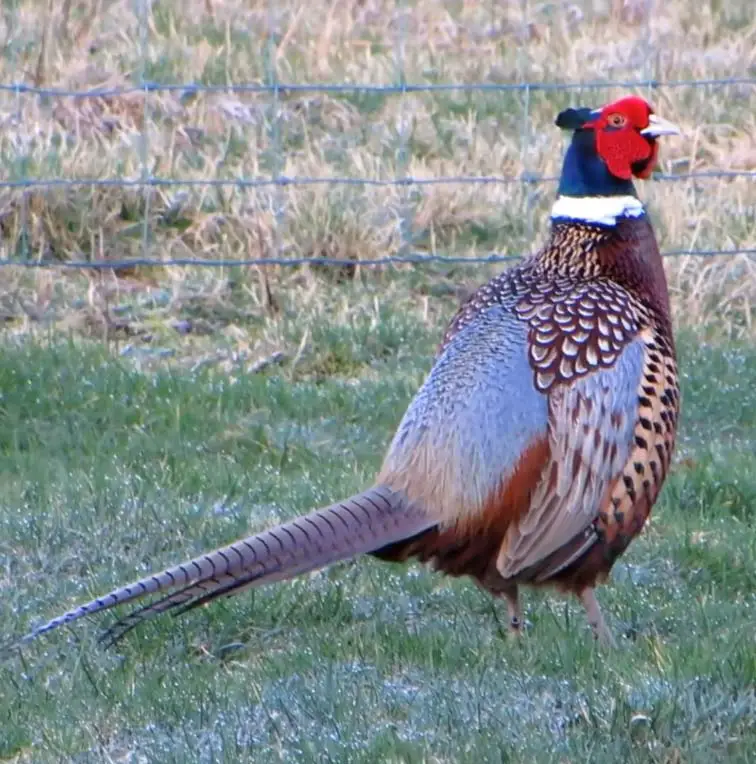
You might be interested in-Can I have a Dracula Parrot as a Pet?
What is Called Pheasant?
A pheasant is a type of game bird, which belongs to the family Phasianidae. Game birds are medium to large-sized birds that have strong legs, short bills, and rounded wings.
Game birds are mostly found in Eurasia and North America, and they are popular among hunters and birdwatchers. They feed on seeds, fruits, insects, and other small animals.
Pheasants are a subfamily of game birds that have colorful plumage, often with metallic or iridescent patterns, and long tails. Some pheasants have crests or wattles on their heads, or spurs on their legs.
Pheasants are mostly polygamous, meaning that one male mates with several females. There are about 50 species of pheasants in the world.

Why do Some People Think that a Coucal is a Pheasant?
One reason why some people might think that a coucal is a pheasant is because of their superficial similarities in appearance and behavior. Both coucals and pheasants have long tails, crests or wattles on their heads, and metallic or iridescent plumage.
They are ground-dwelling birds and prefer to run or walk rather than fly. They often hide in dense vegetation or undergrowth.
Some coucals and pheasants even look very similar to each other, such as the pheasant coucal, the black-faced coucal, and the green peafowl.
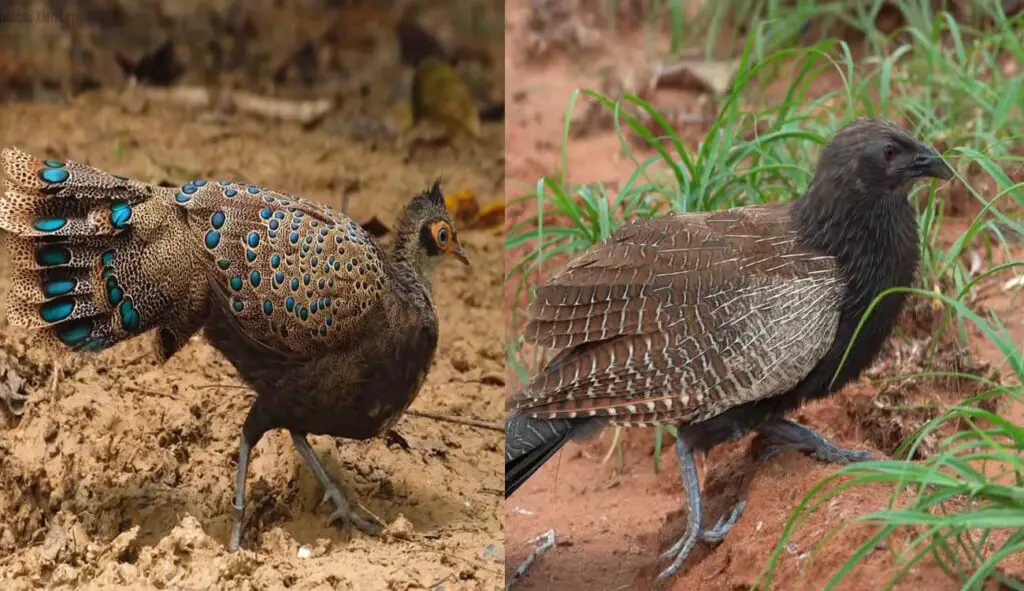
The pheasant coucal is named so because of its resemblance to a pheasant in shape and size, but it is not closely related to them.
The black-faced coucal has a black head and neck, like some pheasants, and the green peafowl has a long green tail, like some coucals.
These similarities may lead some people to assume that coucals and pheasants are the same kind of bird, or at least belong to the same family. However, this is not the case, as we will see in the next paragraph.

Why is a Coucal Not a Pheasant?
The main reason why a coucal is not a pheasant is because of their genetic and evolutionary differences. Coucals and pheasants belong to different families, Cuculidae and Phasianidae, respectively, which means that they have different ancestors and evolutionary histories.
According to molecular and morphological data, cuckoos (including coucals) are more closely related to parrots and passerines (songbirds) than to game birds (including pheasants).
Pheasants, on the other hand, are more closely related to chickens, turkeys, quails, and other game birds than to cuckoos.
The two families diverged from each other about 80 million years ago, during the late Cretaceous period. This means that coucals and pheasants have been evolving separately for a very long time, and have developed different adaptations and characteristics.
For example, cuckoos have zygodactyl feet, which help them grasp branches and perch on trees, while game birds have anisodactyl feet, which help them scratch the ground and dig for food.
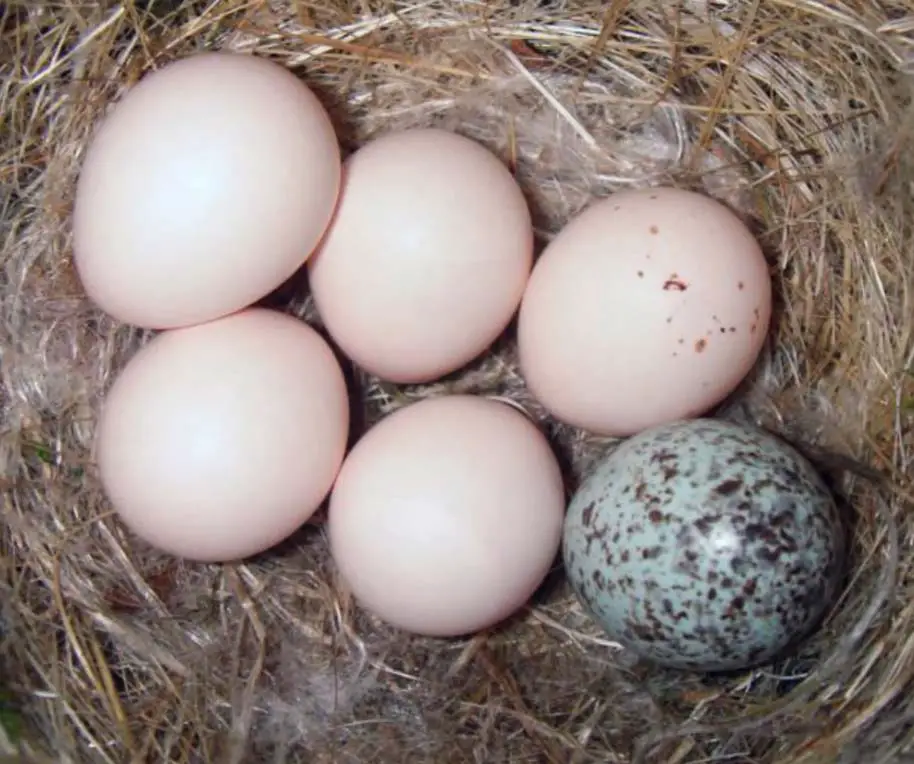
Cuckoos also have a unique breeding behavior of brood parasitism, which involves laying their eggs in the nests of other birds and letting them raise their young. Game birds do not practice brood parasitism, but instead build their own nests and care for their own offspring.
Another difference between coucals and pheasants is their biogeographic distribution. Cuckoos are mostly found in Africa, Asia, and Australasia, while game birds are mostly found in Eurasia and North America. This suggests that they have adapted to different climates and habitats over time.
Final Words
A coucal is not a pheasant. Although they share some common features in appearance and behavior, they belong to different families with different genetic and evolutionary backgrounds.
Coucals are cuckoos that have terrestrial habits and do not practice brood parasitism. Pheasants are game birds that have colorful plumage and are mostly polygamous.
The similarities between coucals and pheasants are likely due to convergent evolution, which occurs when unrelated organisms evolve similar traits due to similar environmental pressures or natural selection.
To classify organisms correctly, we need to use scientific methods and criteria, such as molecular and morphological data, rather than relying on superficial similarities or common names.
Further research or exploration on this topic could include comparing the ecology and behavior of coucals and pheasants, or investigating the origin and evolution of their names.
